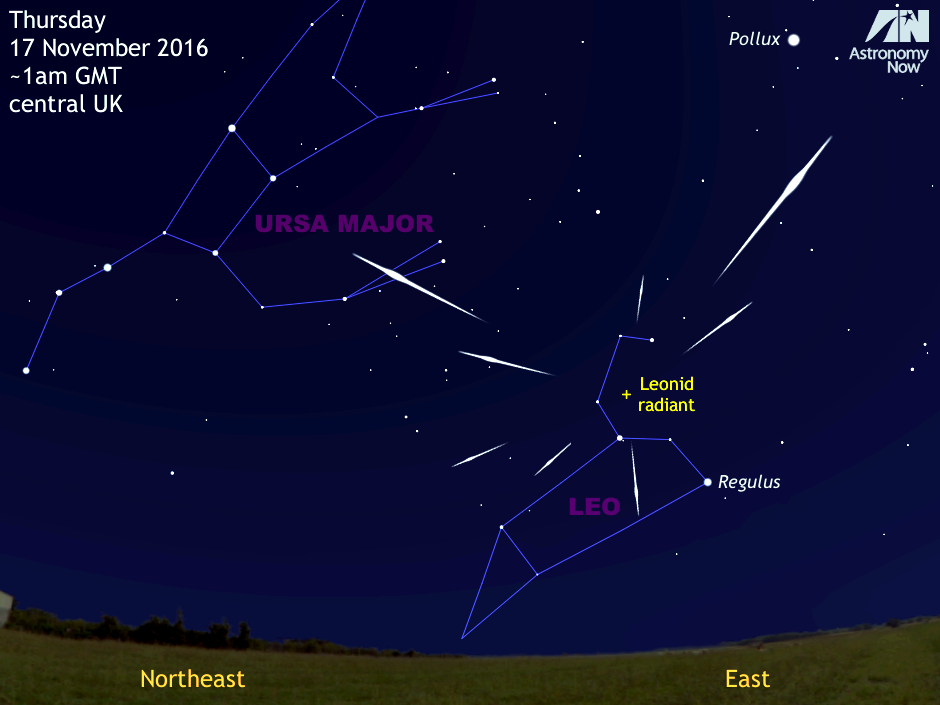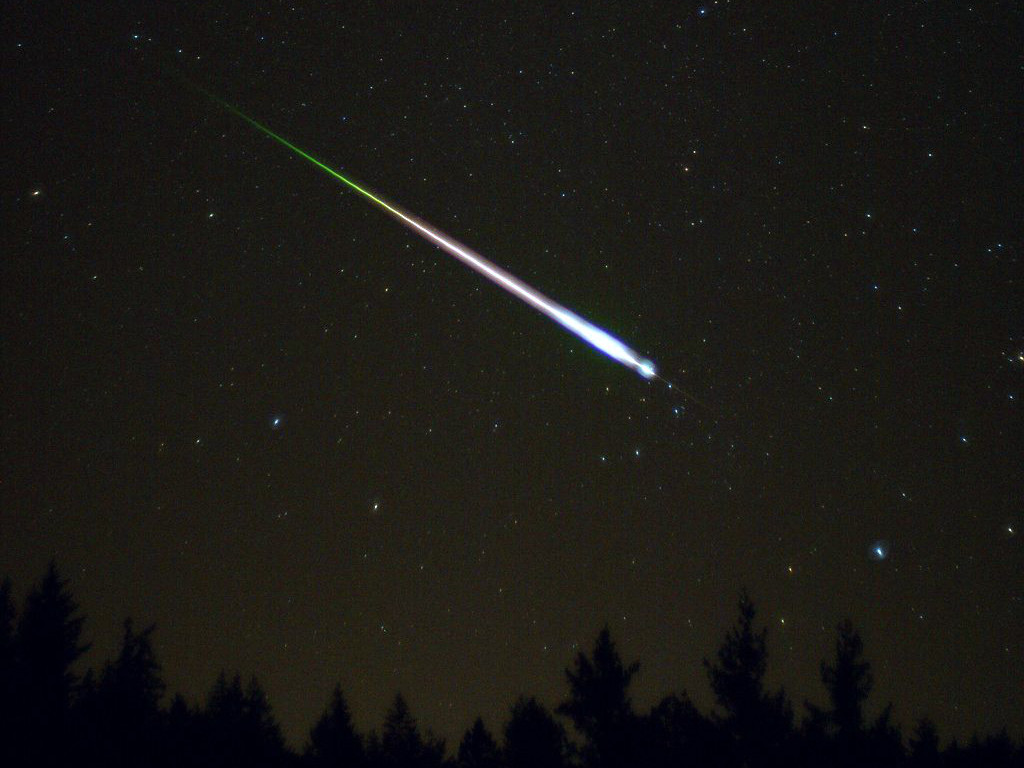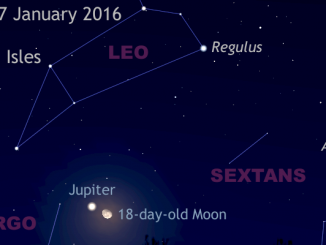
The Leonid shower is well known for these fast meteors, the brightest of which can leave persistent trains that appear to hang in the air for several seconds. Particularly bright shooting stars are known as fireball or bolides, created by cometary debris that might initially have been the size of a grape.
Discovered in December 1865, Comet 55P/Tempel-Tuttle has an orbital period of 33 years and the number of meteoroids it spawns (and hence the number of shooting stars seen) grow in intensity when the comet is near perihelion, its closest approach to the Sun — though at such times we are seeing the debris from former returns that happen to be densest here rather than newly liberated material from the comet.
The Leonids can put on truly extraordinary displays, as witnessed in 1833, 1866, 1966 and 2001. Woodcut prints of the Leonid storm of 1833 depict a continuous rain of shooting stars, like sparklers on Bonfire Night. Contemporary accounts talk of perhaps a quarter-million meteors seen over a nine-hour period as seen from North America.
However, lest you get too excited at the prospect of seeing something similar this year, there are two reasons why this is not going to happen around the maximum that is predicted for the small hours (UK time) of Thursday 17 November. First, comet 55P will not return to the inner solar system until 2031 and heightened activity is unexpected until the late 2020s. Second, the 17-day-old Moon is just three days past full and above the horizon virtually throughout the night.
While it is probable that a Leonid meteor might otherwise be seen, on average, every four minutes near maximum from a dark sky site, the glare of the Moon just 60 degrees from the radiant (the region of the constellation of Leo from which the meteors appear to originate) is going to obliterate all but the brightest shooting stars.
However, for those of you up for the challenge, try to find a safe place as far removed from light pollution as you can soon after midnight that offers a clear view of the eastern sky, positioning yourself such that the Moon is hidden behind a fence or wall to minimise the glare and direct your attention to the sky halfway from horizon to overhead.
Inside the magazine
For a comprehensive guide to observing all that is happening in the current month’s sky, tailored to Western Europe, North America and Australasia, obtain a copy of the November 2016 edition of Astronomy Now.
Never miss an issue by subscribing to the UK’s biggest astronomy magazine. Also available for iPad/iPhone and Android devices.




